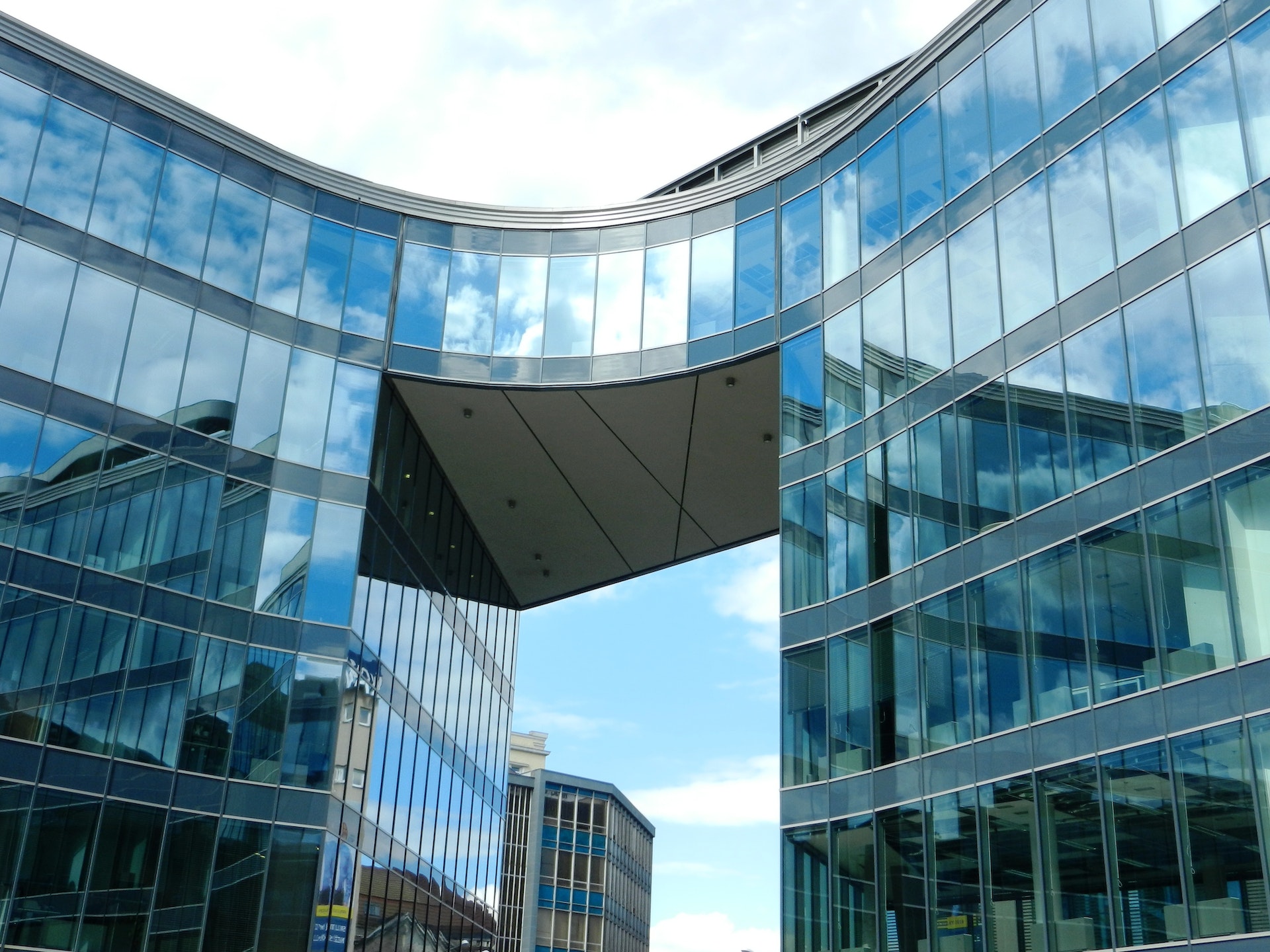Office-to-residential conversion seems like a simple solution to a problem. Nationwide, office vacancies stand at 17%, with some big cities—San Francisco, Houston, Austin—topping 30%, while the U.S. faces a housing deficit of 3.8 million units.
But making an adaptive reuse project pencil out in a tight financing market isn’t so simple. Boston, New York, and San Francisco, are considering ways to improve the financial incentives, change zoning policies and expedite plan reviews, but developers should get a full-service team assembled to take a hard look at a conversion before they get started.
Saving time and money on office-to-residential conversion
This blog looks at structural engineering issues that could prove costly if they are overlooked in the initial stages, and the opportunities that exist to create appealing residential buildings.
Issue 1: Preliminary structural investigation
To design a successful office-to-residential conversion project, an initial structural investigation is a key first step. Every building is unique, and older buildings may not have original structural drawings available or may have had substantial alterations. It’s extremely important for a structural engineer to see the structural elements during a pre-acquisition consultation, or at the onset of the project, to help identify issues early in the development.
Getting to the structure is not always easy and may mean removing existing ceilings and wall finishes long before the general demolition begins. But skipping this key step can cause significant challenges—and added expense—later during construction.
Issue 2: Adding natural light
Housing facilities require exterior views in living units and it’s important to consider how this can be accomplished in an office conversion. In a recent post-tension slab project, IMEG proposed two solutions to bring in natural light—a central atrium or exterior balcony cut-outs. The atrium was more straightforward structurally because it could avoid post-tension bands, but the owner preferred the exterior balconies.
To create the balconies, the post-tension bands on each slab edge would need to be eliminated, which is no small task. To add strength, IMEG offered two solutions: add beams below, or strategically locate new posts to reduce the slab spans. The owner preferred the second approach since the new posts could be integrated into the corners of the new windows. Fiber-reinforced polymer composites can also be used to provide external strengthening where additional strength is needed.
Issue 3: Structural design for mechanical, electrical, and plumbing
Coordinate with the structural engineering team as you plan unit layouts, plumbing, and HVAC. The architectural layout of a residential unit is unlikely to align with the office framing concept. If the units aren’t aligned with the structure the job will be more complex.
A conversion will greatly impact existing and new MEP systems, so the structural team will need to account for new floor and wall openings for conduit, piping, and HVAC. A ground floor restaurant or retail space can further complicate a conversion, as new shafts and penetrations will need to be run through the building. In older buildings, this can be a challenge, as the original shafts are likely smaller than current codes require, and the locations may be difficult to reuse.
Determining whether the floor plate is made of concrete, steel, or wood has a significant impact in the feasibility of a project. Steel or wood is generally easier to adapt in a conversion. If it’s concrete, in particular post-tensioned concrete, you’ll need to scan the slab to locate rebar and the tendons to avoid hitting them with new cores and openings.
Conversions involving steel, heavy timber, and clay tile in historic structures pose additional challenges. A structural engineer can help account for those materials upfront, to avoid surprises and extra costs later.

Issue 4: Rooftop amenities
There’s good news on the roof. An office building’s HVAC equipment is likely heavier (and perhaps outdated), and more than a new residential building would need. So, you should be able to reduce the amount of mechanical, electrical, and plumbing equipment on the roof. That leaves room (and reserve structural capacity) for desirable rooftop amenities, like a bar or pool, and the structural impact is not likely as much as you’d think. A structural engineer can help evaluate the structure and creatively supplement the structural system where it is most needed. For example, pool walls can be used as structure and upturned beams can be hidden by a built-up raised decking system.
Issue 5: Energy efficiency
To make the building attractive to the marketplace, it’s important to update the exterior. Removing outdated and heavy exterior systems can improve aesthetics and energy efficiency. When IMEG worked on the conversion of 100 Van Ness, a 1970s-era office building in San Francisco, the original precast-concrete wall system was replaced with new unitized glass curtain wall.
To make that switch, crews spent six months removing 1,600 precast-concrete panels, each weighing 7,000 to 14,000 pounds. Not only was the finished product a more modern glass building that appeals to tenants, but it also helped prevented a seismic retrofit because the curtain wall had much lighter loads than the original precast panels.
Issue 6: Occupancy
Changing occupancy from office to residential triggers requirements for upgrading non-structural components of the building to comply with current code requirements. However, for the structural systems, where the existing building code is used, the trigger is based on a change in risk category instead of occupancy. Office and residential occupancies are in the same risk category, which would not trigger a wholesale upgrade of the structural system based on occupancy alone.
Several local jurisdictions have adopted their own triggers which do require structural system upgrades, so it is best to verify with the local jurisdiction’s amendments. There also have been changes to how risk category is defined, so buildings with over 5,000 occupants or significant public assembly areas can now trigger a change in category. Substantial alterations to the structure or additions also would trigger upgrades. Historical buildings may also have their own code and unique requirements.
Issure 7: Seismic requirements
Jurisdictions have significant variabilities in seismic requirements that can trigger upgrades for specific building changes in occupancy and use for office to residential conversions, and the associated alterations and additions. In most cases, newer construction buildings are “benchmarked” and do not require a retrofit. Several jurisdictions have adopted local amendments affecting mandatory seismic upgrade triggers:
- San Francisco, Calif., has adopted SFBC 503.11.1, which requires a seismic upgrade when two-thirds or more of the building floors are categorized as a substantial alteration—defined per floor as two-thirds or more of the floor area of a floor undertaking significant non-structural alterations. This is cumulative of any alterations within a two-year period. Retrofit is done to approximately 75% of new code levels.
- Portland, Ore., enacted Title 24.85 Seismic Design Requirements for Existing Buildings, which triggers a seismic upgrade on a change of occupancy or use to more than one-third of the floor area and where the occupant load is more than 149. Retrofit is done to approximately 75% of new code levels, depending on the change in relative hazard classification.
- Seattle, Wash., retrofits are triggered when a significant investment extends the useful life of the building. Similar in intent to the San Francisco "2/3 rule," this would likely trigger a retrofit on a significant conversion project. Retrofit is done to approximately 75% of new code levels.
- Los Angeles, Calif., adopted Los Angeles Municipal Code 91.2.506.5.3, which requires buildings to be upgraded to 75% of new code level for change of occupancy from commercial to residential. Codes 91.8203 and 91.8204 require buildings meet current code.
Every jurisdiction is different and conversions from office to residential may trigger a seismic rehabilitation, which will need to be determined on a building-by-building basis. Owners often ask for voluntary seismic strengthening with the goal of creating a safer structure or reducing the probable maximum loss (PML).
Transforming vacant office spaces into vibrant residential units offers a promising solution to both high office vacancies and housing deficits. But this process involves intricate considerations to ensure success. While financial incentives, zoning adjustments, and expedited planning reviews are being explored in major cities, developers must assemble a comprehensive team to thoroughly assess conversion prospects in the tight financing landscape. Key structural factors include cost effectively introducing natural light, coordinating with mechanical, electrical, and plumbing integration, understanding the existing structure systems, addressing rooftop enhancements, understanding and accounting for seismic impacts, and navigating changes and amendments in national and local building codes.
By embracing these factors and engaging in meticulous planning, developers can unlock the potential of office-to-residential conversions, creating appealing and functional living spaces while simultaneously contributing to urban revitalization and addressing housing needs.
Learn about the MEP, technology, acoustics, and lighting considerations of this topic in the IMEG feature, “Office-to-residential conversion: Key engineering concepts to make your project successful.”
More from Author
IMEG Corp. | Jun 18, 2024
A healthcare simulation technology consultant can save time, money, and headaches
As the demand for skilled healthcare professionals continues to rise, healthcare simulation is playing an increasingly vital role in the skill development, compliance, and continuing education of the clinical workforce.
IMEG Corp. | Jan 11, 2024
Designing for personal technology is crucial for senior living facilities
Today’s seniors are increasingly tech savvy. It isn’t enough to give senior living residents a pre-determined bundle of technology and assume that they’ll be satisfied.
IMEG Corp. | Nov 10, 2023
3 important early considerations for office-to-residential conversions
Scott Campagna, PE, Senior Director of Housing, IMEG Corp, shares insights from experts on office-to-residential conversion issues that may be mitigated when dealt with early.
IMEG Corp. | Jun 12, 2023
Drones take site assessments to new heights
Eric Vallejo, Director of Reality Capture and Geospatial Solutions, IMEG Corp., discusses strategies for using visualization and reality capture.
IMEG Corp. | Apr 20, 2023
13 trends, technologies, and strategies to expect in 2023
Biophilic design, microgrids, and decarbonization—these are three of the trends, technologies, and strategies IMEG’s market and service leaders believe are poised to have a growing impact on the built environment.
IMEG Corp. | Nov 16, 2022
SPC-4D: 7 reasons California hospital building owners should act now to meet seismic compliance
Seismic compliance with the applicable California building codes is onerous and disruptive for building owners, especially for a building in the heavily regulated sector of healthcare. Owners of older buildings that house acute care services have a big deadline on the horizon—Jan. 1, 2030, the cutoff date to upgrade their buildings to SPC-4D.
IMEG Corp. | Aug 1, 2022
Achieving a net-zero K-12 facility is a team effort
Designing a net-zero energy building is always a challenge, but renovating an existing school and applying for grants to make the project happen is another challenge entirely.
IMEG Corp. | Apr 19, 2022
6 trends to watch in healthcare design
As the healthcare landscape continues to evolve, IMEG’s healthcare leaders from across the country are seeing several emerging trends that are poised to have wide-ranging impacts on facility design and construction. Following are six of the trends and strategies they expect to become more commonplace in 2022 and the years to come.
IMEG Corp. | Feb 18, 2022
Crime Prevention Through Environmental Design: Comprehensive strategies to keep people and buildings safe
CPTED is so much more than surface-level protection; it encompasses multiple phases of design, social programs, colors, lighting, natural surveillance, natural access control, and even traffic curbing.
IMEG Corp. | Feb 1, 2022
Sustainable design solutions will power EV charging stations
As the EV market share has been recognized, MEP firms have been tasked with the responsibility of an entirely new design: charging stations.

















